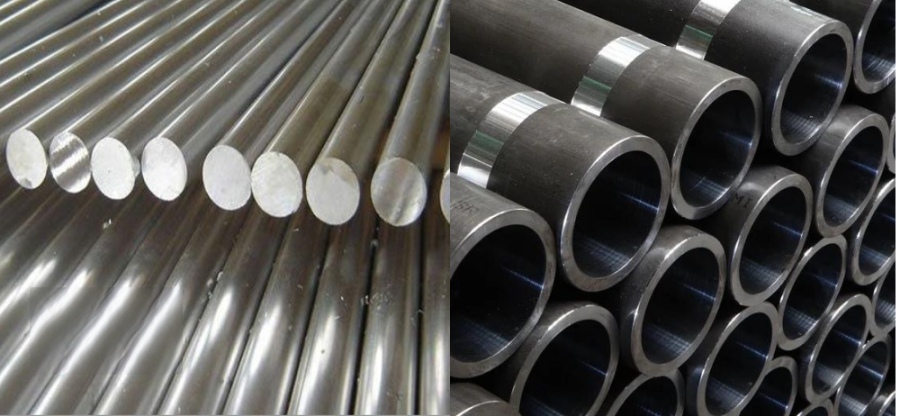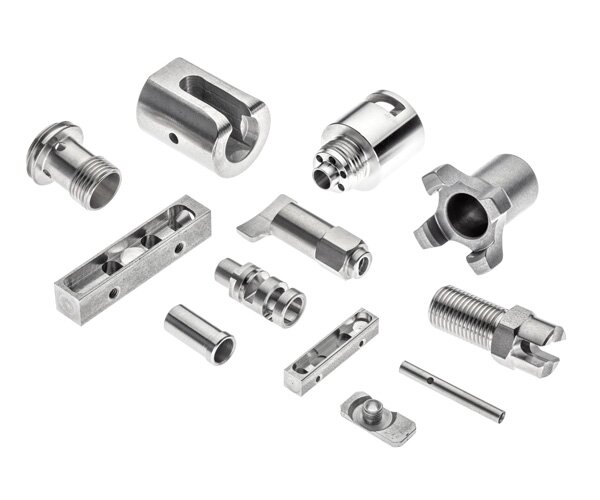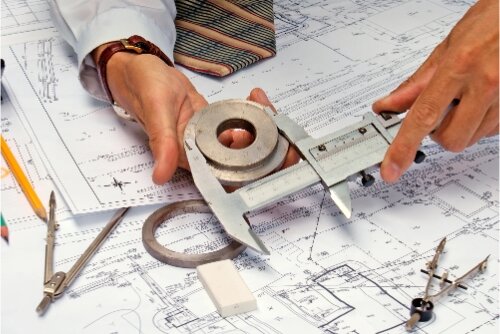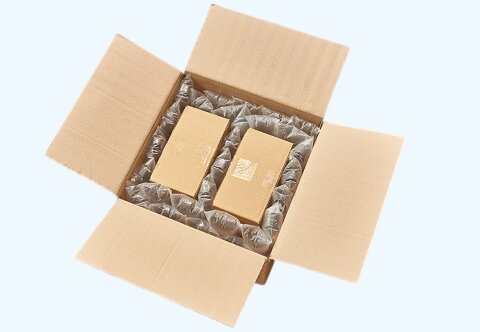Ever felt confused when choosing between 303 and 304 stainless steel? You’re not alone. Many engineers and manufacturers struggle with this decision. Both types offer corrosion resistance and durability, but their subtle differences can significantly impact your project’s success. Let’s clear up the confusion and help you make the right choice.
The main difference between 303 and 304 stainless steel is their composition and properties. 303 contains added sulfur for improved machinability, while 304 offers better corrosion resistance and weldability. Your choice depends on your specific application needs, such as machining requirements or exposure to corrosive environments.
Are you curious about how these differences affect your project? We’ll explore each type’s unique characteristics, the best applications, and how to choose between them. By the end, you’ll clearly understand which stainless steel best suits your needs.

The Basics of Stainless Steel
Stainless steel is an alloy of iron, chromium, and other elements. It’s known for its resistance to corrosion and rust. Adding chromium creates a protective layer on the surface, giving stainless steel its signature properties.
What is 303 Stainless Steel?
303 stainless steel is an austenitic steel. It contains sulfur, which improves its machinability. This makes it ideal for applications that require extensive machining or drilling. 303 is often used in parts that need precise shaping, such as bolts, nuts, and screws.
What is 304 Stainless Steel?
304 stainless steel is also austenitic. It’s known for its excellent corrosion resistance and formability. 304 doesn’t contain the added sulfur found in 303. This steel type is widely used in various industries, from kitchen equipment to industrial applications.
Understanding Stainless Steel Grades
Stainless steel grades indicate the steel’s composition and properties. These grades help engineers and manufacturers choose the right type for their needs.
How Grades Are Categorized
Stainless steel grades are categorized based on their crystalline structure and alloying elements. The main categories are austenitic, ferritic, martensitic, and duplex. 303 and 304 both fall under the austenitic category.
Why is stainless steel labeled as 303 and 304
The American Iron and Steel Institute (AISI) developed the stainless steel numbering system. The 300 series denotes austenitic stainless steels, and the specific numbers 303 and 304 indicate each type’s unique composition and properties.
303 Stainless Steel: Characteristics and Properties
303 stainless steel stands out for its excellent machinability, which makes it a popular choice for applications requiring complex shapes or precise machining. Let’s examine its specific characteristics and properties.
Chemical Composition of 303 Stainless Steel
The unique properties of 303 stainless steel stem from its chemical composition. This specific blend of elements gives 303 its distinctive traits.
303 stainless steel contains chromium (17-19%), nickel (8-10%), and sulfur (0.15% minimum). The addition of sulfur sets 303 apart from other stainless steels. It also contains small amounts of silicon, manganese, and phosphorus.
Mechanical Properties of 303 Stainless Steel
The mechanical properties of 303 stainless steel make it suitable for various applications. These properties determine how the material behaves under different types of stress.
303 stainless steel has a tensile strength of about 515 MPa and a yield strength of 205 MPa. Its Brinell hardness ranges from 160 to 190. These properties make it strong enough for many applications while remaining relatively easy to machine.
Machinability of 303 Stainless Steel
One critical advantage of 303 stainless steel is its superior machinability. This property makes it a favorite among manufacturers who need to create complex or precise parts.
The added sulfur in 303 forms manganese sulfide inclusions. These act as chip breakers during machining, resulting in shorter chips and a smoother cutting action. This leads to better surface finishes and longer tool life.
Corrosion Resistance of 303 Stainless Steel
While 303 offers good corrosion resistance, it’s less resistant than other stainless steel. Its performance varies depending on the environment.
303 performs well in mild corrosive environments. However, it’s less resistant to severe corrosive conditions compared to 304. It’s particularly vulnerable to pitting and crevice corrosion in chloride-rich environments.
Typical Applications of 303 Stainless Steel
The unique properties of 303 stainless steel make it suitable for various applications across various industries.
303 is commonly used in the automotive, aerospace, and food processing industries. It’s often found in gears, shafts, bolts, nuts, and other machine parts requiring extensive machining. It’s also used in some food handling equipment, though 304 is more common due to its superior corrosion resistance.

304 Stainless Steel: Characteristics and Properties
304 stainless steel is renowned for its excellent corrosion resistance and versatility. It’s among the most widely used stainless steel grades across various industries. Let’s explore its specific characteristics and properties.
Chemical Composition of 304 Stainless Steel
The chemical composition of 304 stainless steel gives it its unique blend of properties, which sets it apart from other stainless steel grades, including 303.
304 stainless steel contains chromium (18-20%) and nickel (8-10.5%). Unlike 303, it doesn’t contain added sulfur. It also includes small amounts of carbon, manganese, silicon, and phosphorus. This composition results in excellent corrosion resistance and good formability.
Mechanical Properties of 304 Stainless Steel
The mechanical properties of 304 stainless steel make it suitable for a wide range of applications. These properties determine how the material performs under various stress and environmental conditions.
304 stainless steel has a tensile strength of about 515-620 MPa and a yield strength of 205 MPa. Its Brinell hardness ranges from 123 to 220. These properties provide a good balance of strength and flexibility, making it suitable for forming and welding.
Corrosion Resistance of 304 Stainless Steel
One of the standout features of 304 stainless steel is its excellent corrosion resistance, which makes it ideal for use in various environments.
304 stainless steel offers superior resistance to corrosion in many environments. It performs well in oxidizing atmospheres and many organic and inorganic chemicals. However, it can be susceptible to pitting and crevice corrosion in environments with high chloride content.
Weldability of 304 Stainless Steel
304 stainless steel is known for its excellent weldability. This property makes it a popular choice for applications that require joining or fabrication.
Three hundred four can be welded using most standard welding techniques. It maintains its corrosion resistance after welding, which is crucial for many applications. The absence of added sulfur (unlike 303) contributes to its superior weldability.
Typical Applications of 304 Stainless Steel
The combination of corrosion resistance, strength, and formability makes 304 stainless steel suitable for various applications across various industries.
304 is commonly used for equipment and utensils in the food and beverage industry. It’s also found in architectural applications, chemical processing equipment, and heat exchangers. In the automotive industry, it’s used for exhaust systems and trim. You’ll also find 304 in household appliances, sinks, and cookware.
303 vs 304 Stainless Steel: Key Differences
Understanding the key differences between 303 and 304 stainless steel is crucial for selecting the suitable material for your project. Let’s break down these differences into several important categories.
Chemical Differences Between 303 and 304
The chemical composition sets the foundation for the distinct properties of 303 and 304 stainless steel:
- Sulfur content: 303 contains added sulfur (0.15% minimum), while 304 does not
- Chromium: Both contain similar amounts (17-19% in 303, 18-20% in 304)
- Nickel: Slightly higher in 304 (8-10.5%) compared to 303 (8-10%)
- Phosphorus: Higher in 303 (0.20% max) than in 304 (0.045% max)
These differences in composition directly influence the properties and performance of each steel type.
Mechanical Differences Between 303 and 304
While both steels have similar strength, there are some notable differences:
- Tensile strength: 304 has a slightly higher range (515-620 MPa) compared to 303 (515 MPa)
- Yield strength: Both have similar yield strength (205 MPa)
- Hardness: 304 has a more comprehensive Brinell hardness range (123-220) than 303 (160-190)
- Ductility: 304 tends to be more ductile due to the absence of sulfur
These mechanical properties influence how each steel type performs in different applications.
Corrosion Resistance Comparison
Corrosion resistance is a critical factor in choosing between 303 and 304:
- General corrosion resistance: 304 outperforms 303
- Pitting resistance: 304 has better resistance to pitting corrosion
- Crevice corrosion: 304 is more resistant to crevice corrosion
- Performance in chloride environments: 304 performs better than 303
The superior corrosion resistance of 304 makes it more suitable for applications in harsh environments.
Machinability vs. Weldability
This is perhaps the most significant difference between 303 and 304:
- Machinability: 303 is superior due to its added sulfur content
- Weldability: 304 excels in welding applications
- Surface finish: 303 allows for better surface finishes in machined parts
- Post-weld properties: 304 maintains its properties better after welding
These differences make 303 the go-to choice for precision-machined parts, while 304 is preferred for welded structures.
Cost Comparison of 303 vs 304
The cost difference between 303 and 304 can impact project budgets:
- Raw material cost: 304 is generally more expensive than 303
- Processing cost: 303 may have lower machining costs due to its better machinability
- Long-term cost: 304 might be more cost-effective in corrosive environments due to its durability
- Availability: 304 is more widely available, which can affect pricing and lead times
Consider initial and long-term costs when choosing between 303 and 304 for your project.
303 vs 304 Stainless Steel: Quick Comparison
This table provides a quick reference for the key differences between 303 and 304 stainless steel, helping you decide based on your specific project requirements.
| Feature | 303 Stainless Steel | 304 Stainless Steel |
|---|---|---|
| Sulfur Content | 0.15% minimum | None added |
| Machinability | Excellent | Good |
| Weldability | Poor | Excellent |
| Corrosion Resistance | Good | Excellent |
| Tensile Strength | 515 MPa | 515-620 MPa |
| Yield Strength | 205 MPa | 205 MPa |
| Brinell Hardness | 160-190 | 123-220 |
| Best For | Precision-machined parts | Welded structures, corrosive environments |
| Common Applications | Bolts, nuts, screws, shafts | Food equipment, heat exchangers, architectural applications |
| Cost | Generally lower | Generally higher |
| Availability | Less common | Widely available |
Choosing the Right Grade for Your Application
Selecting the appropriate stainless steel grade is crucial for your project’s success. Let’s break down the key factors to consider and when to choose 303 or 304.
Factors to Consider When Selecting Stainless Steel
When deciding between 303 and 304 stainless steel, consider these factors:
- Environmental conditions: Exposure to corrosive elements
- Manufacturing process: Machining vs. welding requirements
- Mechanical properties: Strength and hardness needs
- Cost constraints: Initial and long-term expenses
- Availability: Supply chain considerations
Which Grade is Best for Machining?
303 stainless steel is often the preferred choice for machining:
- Superior machinability due to added sulfur
- Produces better surface finishes
- Reduces tool wear and machining time
- Ideal for complex or precision parts
- Commonly used for screws, bolts, and custom-machined components
Which Grade is Best for Corrosive Environments?
304 stainless steel outperforms 303 in corrosive environments:
- Higher resistance to general corrosion
- Better performance against pitting and crevice corrosion
- Suitable for food processing and chemical industries
- Performs well in marine environments (with limitations)
- Maintains appearance and integrity in outdoor applications
When to Choose 304 for Welding
304 stainless steel is the go-to choice for welding applications:
- Excellent weldability with most standard techniques
- Maintains corrosion resistance after welding
- Suitable for large structures and fabrications
- Commonly used in construction and architectural applications
- Ideal for tanks, piping, and pressure vessels
Understanding Cost-Effectiveness
Consider these points when evaluating cost-effectiveness:
- Initial material cost: 304 is generally more expensive
- Processing costs: 303 may have lower machining costs
- Long-term expenses: 304 might be more cost-effective in corrosive environments
- Volume considerations: Bulk pricing may affect decision
- Maintenance costs: Factor in potential replacement or repair expenses
By carefully weighing these factors, you can choose the stainless steel grade that best fits your application, balancing performance requirements with budget constraints.
Conclusion
Choosing between 303 and 304 stainless steel depends on your specific needs. 303 excels in machining, while 304 offers superior corrosion resistance and weldability. Consider your application’s requirements, environmental factors, and budget to make the best choice.
Do you need a reliable sheet metal parts manufacturer? Shengen is the place to go. We specialize in sheet metal laser cutting, bending, surface finish, and CNC Machining. Reach out to Shengen Today and seek help from professionals!
FAQs
Is 303 Stainless Steel More Expensive Than 304?
303 is generally less expensive than 304 due to its composition and manufacturing process.
Can 303 and 304 Stainless Steel Be Used Interchangeably?
Only sometimes. While they share some properties, their machinability, corrosion resistance, and weldability differences make them suited for different applications.
Which Stainless Steel Grade is More Corrosion Resistant?
304 stainless steel is more corrosion resistant than 303, making it better suited for harsh environments.
Will 303 stainless steel rust?
Three hundred three can rust in highly corrosive environments, especially those with chlorides. It’s less resistant to rust than 304.
Are 303 and 304 Both Suitable for Food-Grade Applications?
While both can be used, 304 is more commonly used in food-grade applications due to its superior corrosion resistance and more accessible cleaning properties.
Hey, I'm Kevin Lee

For the past 10 years, I’ve been immersed in various forms of sheet metal fabrication, sharing cool insights here from my experiences across diverse workshops.
Get in touch

Kevin Lee
I have over ten years of professional experience in sheet metal fabrication, specializing in laser cutting, bending, welding, and surface treatment techniques. As the Technical Director at Shengen, I am committed to solving complex manufacturing challenges and driving innovation and quality in each project.




